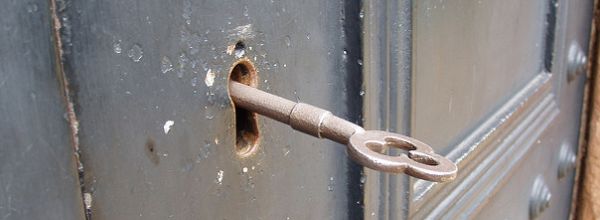Why Do You Need to Disinfect Your Microscope?
Microscopes are a significant investment by laboratories and are commonly shared by several users. These sophisticated instruments require periodic maintenance and cleaning to produce high-quality images. When working with live samples like cell culture, bacteria, fungi, and viruses, contamination due to spillage is unavoidable. Contaminants can also be transferred to the microscope by users (e.g., oil and sweat from hands and moisture from breathing) and from the general environment. The fact that viruses and spores (both bacterial and fungal) can remain infectious on surfaces like metal, glass, or plastic for hours to days means that microscopes could spread infectious agents from user to user. Hence, cleaning and disinfecting your microscope regularly is important to ensure optimal microscope performance and user safety.
Regular Cleaning vs Disinfection
A microscope’s performance relies on keeping its optics, lenses, filters, and prisms free of any contaminants. Cleaning a microscope involves removing dirt and particles to ensure high-quality images free of artifacts. Dust and debris usually accumulate on microscopes that are left uncovered or are not regularly in operation. To clean the accessible components, remove surface dust with a squeeze bulb or a gentle lint-free Kimwipe (or similar) tissue. Disinfecting, on the other hand, involves killing viruses and bacteria. In general, it is good practice to clean a microscope before disinfecting it.
As you clean and disinfect the microscope, it is important to keep your safety in mind and to follow general good hygiene procedures.
- Wear gloves and a face mask.
- Discard gloves after each cleaning, and use a different set of gloves for disinfecting.
- After the disinfection process, discard gloves and wash your hands thoroughly with soap and water.
Which Parts Should Be Disinfected?
You should disinfect the areas of the microscope that are most often touched. These include eyepieces, the stage handle, focus knobs, nosepieces (where objectives are mounted), and in some cases, the mouse and keyboard used for operating the microscope.
What Can You Use to Disinfect a Microscope?
Commonly used surface disinfectants contain alcohols, aldehydes, chlorine compounds, phenols, and peroxides. The efficiency of disinfection depends on the concentration of the disinfectant, contact time with the material, and the type of microbes present. In addition to the disinfectant, you need cotton swabs, lens cleaning paper, and latex gloves. These items are disposable and should be discarded after use.
Alcohols
Alcohols are the most common type of disinfectant and are safe to use on most microscope components except for materials like rubber or specific plastics. For optical components like eyepieces, condensers, and objectives, 70% ethanol is safe to use. As an alternative to 70% ethanol, 90% isopropyl alcohol can be used. Place a drop of the alcohol on a tissue or lens paper, and remove dust with a gentle wipe. Make sure the alcohol does not drip onto the rubber eyepiece seals. As you clean the optical components, discard the tissue after each use.
Hydrogen Peroxide
Stronger disinfectants like hydrogen peroxide are another option for killing spores, tough viruses, and prions and should be used at concentrations of 3% or lower. Hydrogen peroxide is not recommended for components made of brass or for special coatings on objective lenses. [1]
Considerations When Disinfecting Your Microscope
Use Solvents Carefully
Always be careful when using a solvent on your microscope. Optical components should not be immersed in any solvent, and cleaning cloths should only be moistened, never saturated, with a cleaning solution. One significant danger when cleaning or disinfecting optical surfaces is the potential to dissolve cement in the lens assembly by unintentional seepage of solvents. Cleaning and disinfecting inaccessible components should always be done by professionals.
Use Different Chemicals For Different Parts of Your Microscope
Not all disinfectants are safe for all areas of the microscope. For example, a harsh chemical like hypochlorite can destroy the surface coatings of optical components like eyepieces and objectives. Abrasive compounds can scratch surfaces and damage the protective coatings of critical microscope parts. If you have doubts about which disinfectants to use, read the relevant Safety Data Sheet of the components, or get in touch with the manufacturer representatives.
An alternative to disinfecting is to cover all areas prone to contamination with a thin plastic film that is replaced after each use.
General Considerations for Keeping a Microscope Germ Free
Good preventive care is critical to preserving the lifetime of a microscope and for acquiring quality images. Always wear disposable gloves when using a microscope to avoid contaminating microscope surfaces, and discard them after each use. In the case of sample spillage on the stage, wipe the surfaces dry using soft tissue paper, and clean with a mild soapy solution.
The environment around the microscope should also be kept free of dust and moisture to avoid fungal growth. When not in use, microscopes should be covered with a plastic dust cover to prevent the accumulation of dust particles and moisture.
After all, a clean and disinfected microscope is a part of good scientific practice!
Disclaimer
This article should be used as a quick guide to general microscope decontamination methods. Each manufacturer may have a slightly different recommended protocol for disinfection. Always seek professional advice from a microscope manufacturer or facility manager for a more detailed protocol.
Do you have any other ideas to keep your microscopes germ free? Leave your comments below.
References
- Leica. How to sanitize a microscope. [Accessed on June 24, 2020]







